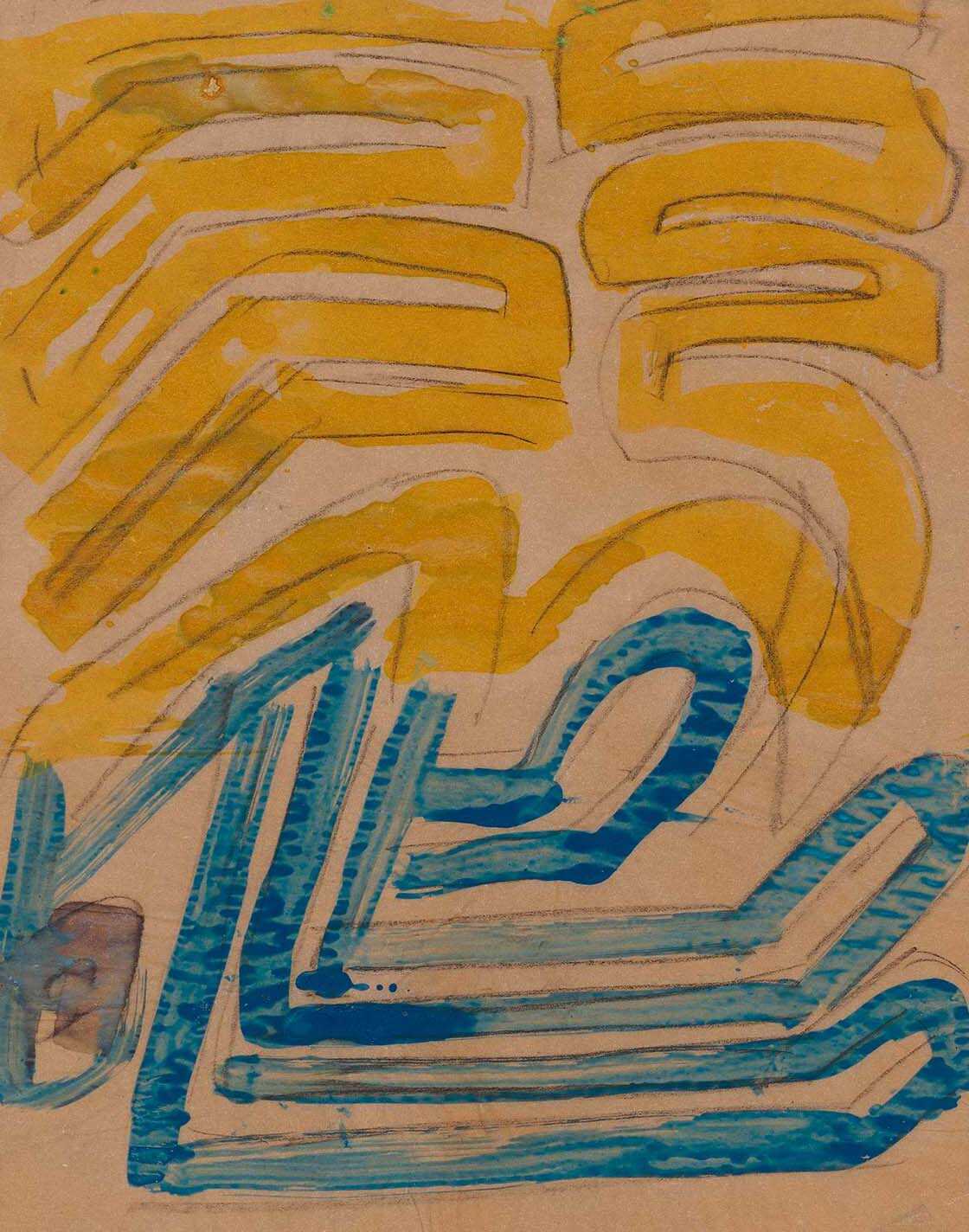Metropolitan Organisation of Museums of Visual Arts of Thessaloniki – MOMus – Licence: CC BY-SA 4.0 Source: Europeana
i am
As a figure captured in motion, I embody the essence of human form and expression. My lines are bold yet fluid, suggesting both strength and vulnerability. The earthy tones that envelop me evoke a sense of warmth and grounding, while the stark contrasts highlight the tension between light and shadow, reflecting the complexities of existence. I stand poised, my posture conveying a dynamic energy, as if I am on the brink of movement. This sense of action invites viewers to contemplate the journey of life—its struggles, triumphs, and the raw beauty of the human experience. My incomplete nature, with parts left undefined, symbolizes the ongoing quest for identity and self-discovery. Emotionally, I resonate with themes of resilience and introspection. The way I hold my arms suggests a protective stance, perhaps indicating a desire for safety or a moment of reflection. This duality of strength and fragility invites a deeper connection with those who gaze upon me. Conceptually, I represent the intersection of art and life, where the physical form transcends mere representation to evoke feelings of empathy and understanding. I am a reminder of the shared human condition, urging viewers to explore their own narratives within the lines and colors that define me. In this space, I invite contemplation, connection, and a celebration of the beauty inherent in our shared existence.
idea
Figure
The image depicts a human figure, emphasizing the form and posture. This focus on the figure is central to many artistic practices, particularly in figure drawing and anatomy studies.
idea
Movement
The pose suggests a sense of movement, capturing the dynamism of the human body. This aspect is crucial in conveying emotion and energy in art.
idea
Line
The use of lines to outline the figure highlights the artist’s technique. Lines are fundamental in drawing, serving to define shapes and create structure.
idea
Expression
The abstract nature of the figure allows for various interpretations, inviting viewers to engage with the emotional and conceptual depth of the artwork.
Art
Figure Drawing Techniques
Exploring various techniques in figure drawing, including gesture drawing and contour lines, which emphasize the human form’s movement and structure, as seen in the provided image.
Anatomy
Human Anatomy for Artists
Understanding human anatomy is crucial for artists to accurately depict the body, focusing on muscle structure and proportions, which can enhance the realism of figure drawings.
Art History
The Evolution of Figure Art
Tracing the evolution of figure art from classical sculptures to modern abstract representations, highlighting how artists have interpreted the human form throughout history.
Dance
The Art of Movement
Examining how dance captures the essence of human expression and movement, paralleling the dynamic poses often depicted in figure drawings and paintings.
Psychology
Body Language and Expression
Investigating how body language conveys emotions and intentions, and how artists can capture these subtle cues in their figure drawings to evoke a deeper connection with viewers.
feeling
Vulnerability
The figure’s pose and the incomplete nature of the drawing evoke a sense of vulnerability, as it appears to be in a moment of exposure, both physically and emotionally.
feeling
Movement
The dynamic lines and the posture suggest a sense of movement, which can elicit feelings of energy and fluidity, as if the figure is caught in a moment of action.
feeling
Isolation
The simplicity of the background and the solitary figure can create a feeling of isolation, prompting reflections on loneliness or the human condition.
feeling
Strength
Despite the vulnerability, the strong lines and confident stance of the figure can also convey a sense of strength and resilience, highlighting the duality of human experience.
feeling
Contemplation
The unfinished quality of the artwork invites contemplation, encouraging viewers to reflect on their own interpretations and emotions related to the figure’s state.
relationship
Untitled
Heimrich, Gottfried (Herstellung) (Künstler/in)

State Association of Fine Arts Saxony eV
License: CC BY-SA 4.0
Courtesy: Europeana
relationship
Zerklüftung
Kempin, Eckhard (Herstellung) (Künstler/in)

State Association of Fine Arts Saxony eV
License: CC BY-SA 4.0
Courtesy: Europeana
relationship
From the series “Lepanto: The Naval Battle”
Pierrakos, Alkis (1920-2017) 2012

Metropolitan Organisation of Museums of Visual Arts of Thessaloniki – MOMus
License: CC BY-SA 4.0
Courtesy: Europeana
relationship
Untitled
Ender, Yurii (1898-1963)

Metropolitan Organisation of Museums of Visual Arts of Thessaloniki – MOMus
License: CC BY-SA 4.0
Courtesy: Europeana
relationship
Harter Regen I
Hänel, Winfried (Herstellung) (Künstler/in)

State Association of Fine Arts Saxony eV
License: CC BY-SA 4.0
Courtesy: Europeana
relationship
Warm and cold colour study
Chryssa (Vardea-Mavromichali) (1933-2013)

Metropolitan Organisation of Museums of Visual Arts of Thessaloniki – MOMus
License: CC BY-SA 4.0
Courtesy: Europeana
Music
Boléro by Maurice Ravel
The repetitive and gradually building nature of this piece mirrors the fluidity and rhythm of the human form in motion, akin to the figure’s stance in the artwork.
Music
Concerto for Orchestra by Béla Bartók
This orchestral work showcases the interplay of different instruments, much like the interplay of lines and forms in the figure, highlighting the complexity of human movement.
Music
Carmen Suite by Georges Bizet
The vibrant and passionate themes in this suite reflect the emotional depth and physicality of the figure, connecting the visual and auditory arts through expressive movement.
Theatre
The Shape of Things by Neil LaBute
This play explores themes of transformation and the human form, paralleling the fluidity and abstraction seen in the image. The character’s physicality and the manipulation of their body reflect the artistic representation of the human figure.
Theatre
Dance of Death by August Strindberg
Strindberg’s work delves into the complexities of human relationships and the physicality of the characters. The stark lines and poses in the image resonate with the tension and emotional struggle depicted in the play.
Cinema
The Tree of Life (Terrence Malick)
This film explores the themes of existence, nature, and the human experience through visual storytelling. The abstract and fluid representation of the human form in the image resonates with the film’s exploration of life’s complexities and the beauty of the human body.
Cinema
Birdman (Alejandro González Iñárritu)
Birdman delves into the struggles of an actor and the nature of performance. The dynamic pose in the image reflects the physicality and emotional depth of the characters, paralleling the film’s focus on the human form and its expression in art.
Cinema
Black Swan (Darren Aronofsky)
This psychological thriller about a ballerina’s descent into madness highlights the beauty and fragility of the human body. The image’s emphasis on the figure aligns with the film’s themes of physicality, transformation, and the pursuit of perfection in art.
Cinema
The Shape of Water (Guillermo del Toro)
This film tells a love story between a mute woman and an aquatic creature, emphasizing the beauty of the human form and the connection between beings. The fluidity and abstraction in the image reflect the film’s themes of love, acceptance, and the blending of different forms.
Cinema
Frida (Julie Taymor)
Frida Kahlo’s life and art are depicted in this biopic, showcasing her unique style and the physicality of her experiences. The image’s focus on the human figure resonates with Kahlo’s exploration of identity, pain, and the human condition.




